The second-largest metropolitan area of France is home to one of the most impressive museums of fine arts outside of Paris.
The Museum of Fine Arts of Lyon or Musée des Beaux-Arts de Lyon is one of the largest museums in France and houses a collection that ranges from ancient Egyptian artifacts to modern artworks.
The museum is housed in a stunning building that once served as a Benedictine abbey in the 17th and 18th centuries known as the Royal Abbaye des Dames de Saint-Pierre.
It faces the southern part of the Place des Terreaux, a square in central Lyon where you can also find the Hôtel de Ville or City Hall of the city.
Like in many other abbeys in France, the nuns at the monastery were expelled during the French Revolution and the museum was established shortly after in 1801.
Originally known as the Palais du Commerce et des Arts, the museum became the Musée des Beaux-Arts in the early 20th century.
The museum was completely restored between 1988 and 1998 and has become one of the most exciting art galleries in Europe.
In this article, you’ll discover some of the most famous paintings at the Museum of Fine Arts of Lyon.
1. The Ascension of Christ – Pietro Perugino
- Date created: 1495-1498
- Dimensions: 325 x 265 centimeters (127.95 x 104.3 inches)
The Ascension of Christ is a huge painting by Renaissance artist Pietro Perugino (1456-1523), a man famously known as the master of High Renaissance Raphael (1483-1520). He’s also famous for being among the first artist to decorate the Sistine Chapel in Rome in the early 1480s.

This painting served as the original version of another monumental altarpiece known as the Sansepolcro Altarpiece, a painting that still decorates the Cathedral of Sansepolcro in the Tuscany region of Central Italy today. It depicts a floating Christ who is surrounded by music-playing angels as people watch in amazement below.
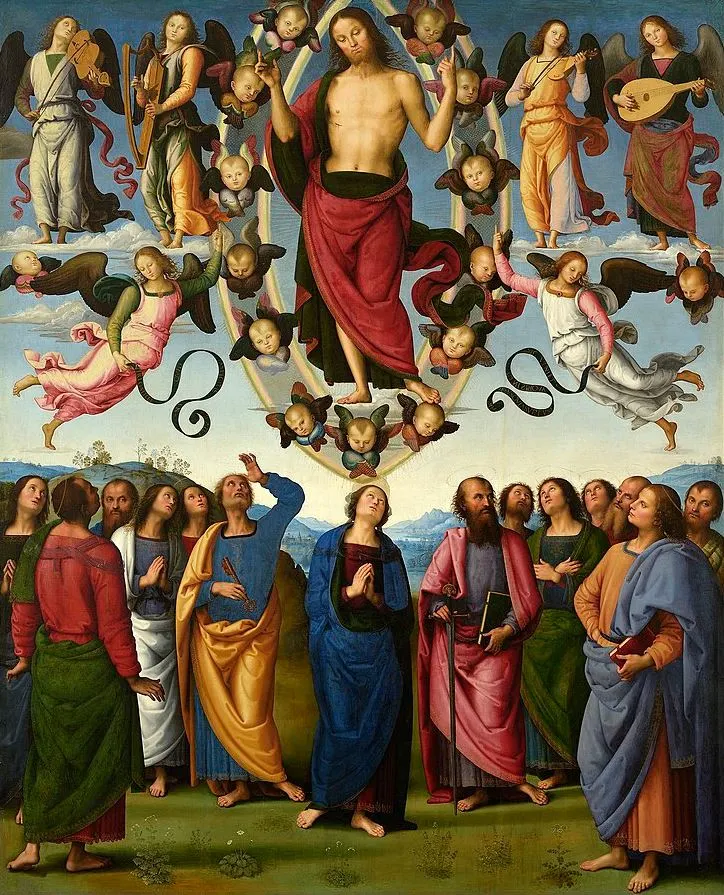
2. Danaë – Tintoretto
- Date created: 1570
- Dimensions: 142 × 182 centimeters (56 × 72 inches)
Danaë is the title of one of the most famous paintings by Tintoretto (1518-1594), the Venetian artist of the Mannerist era. The painting depicts a popular scene of Greek Mythology in which we can see Zeus seducing Danaë who was being locked inside a bronze room by her own father.
King Acrisius of Argos did this because a prophecy was foretold that he would be killed by his own grandson. Zeus, however, managed to enter the room and impregnated the king’s daughter. The prophecy eventually came true because their son, Perseus, accidentally killed his grandfather during an athletics game.

3. Bathsheba at her Bath – Paolo Veronese
- Date created: 1575
- Dimensions: 191 × 224 centimeters (75 × 88 inches)
Bathsheba at her Bath is a painting by Paolo Veronese (1528-1588), another Venetian master of the 16th century. He painted this popular Biblical story of Bathseba being spied upon by two elderly men who later accuse her of adultery because she didn’t agree to their sexual advances.
The artist managed to cut the painting in half by adding a large pillar in the center. This way he was able to paint the scene of Bathsheba bathing on the left and the spying elderly men on the right. Both scenes are perfectly linked together by Veronese’s magnificent use of light and shadow.
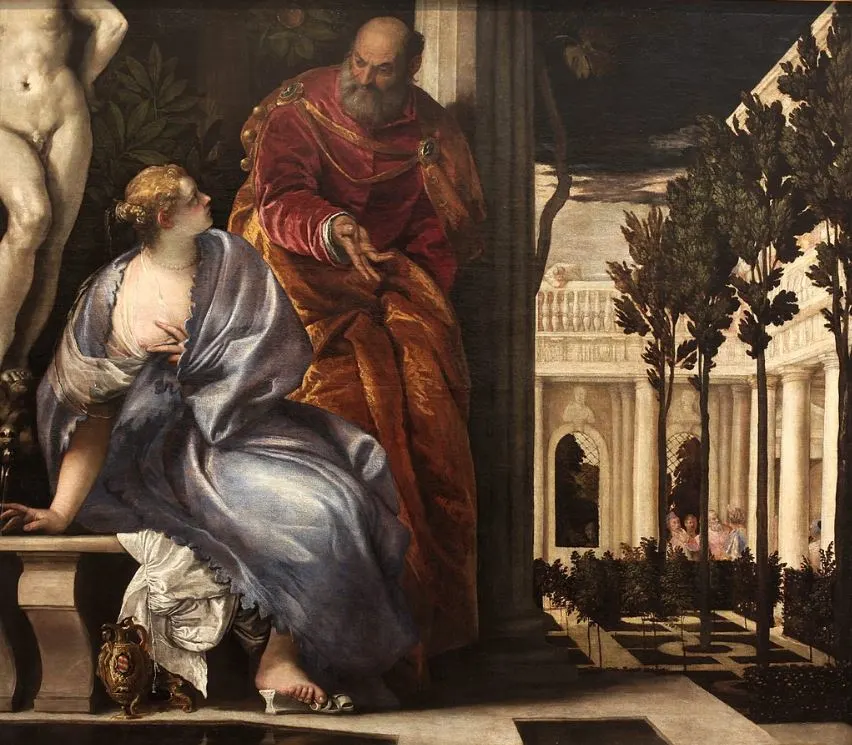
4. Adoration of the Magi – Peter Paul Rubens
- Date created: 1617-1618
- Dimensions: 251 × 328 centimeters (99 × 129 inches)
Adoration of the Magi is a painting by Peter Paul Rubens (1577-1640) that depicts yet another popular story in art history, that of the newly born Jesus Christ being visited by the so-called Three Kings. To emphasize the popularity of this story, Rubens painted 4 different versions of this subject in his career.
The painting at the Museum of Fine Arts of Lyon was the second version and was completed about 8 years after he painted the first in 1609. He did, however, completely reworked this painting at the Prado Museum in Madrid in the late 1620s. The version in Lyon is believed to have been a secular commission.
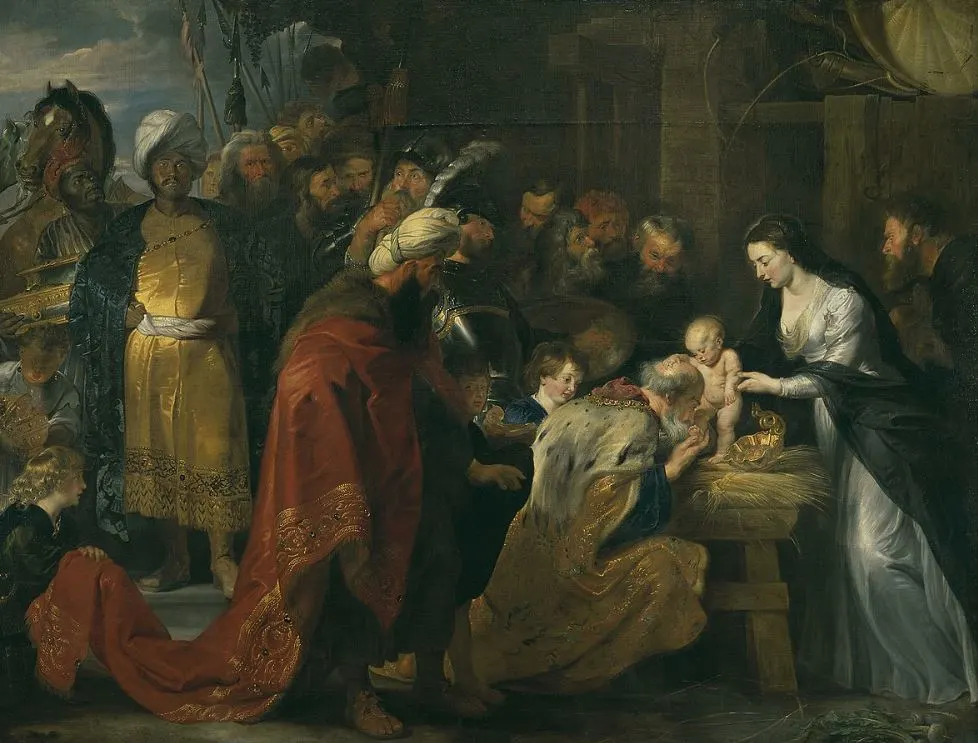
5. The Stoning of Saint Stephen – Rembrandt van Rijn
- Date created: 1625
- Dimensions: 89 × 123 centimeters (35 × 48 inches)
The Stoning of Saint Stephen is a painting by Rembrandt (1606-1669) and one of the most fascinating ones in his oeuvre for two reasons. First of all, it was the first work in his career that is signed and dated. Secondly, it features what is believed to be the first self-portrait of the Dutch master.
Not just that, it has been suggested that it features about 7 variations of the artist’s self-portrait. He was only 19 years old when he completed this work in his native Leiden and was clearly still in his experimentation phase. The painting of the martyrdom of Saint Stephen in Jerusalem is, however, of the highest quality
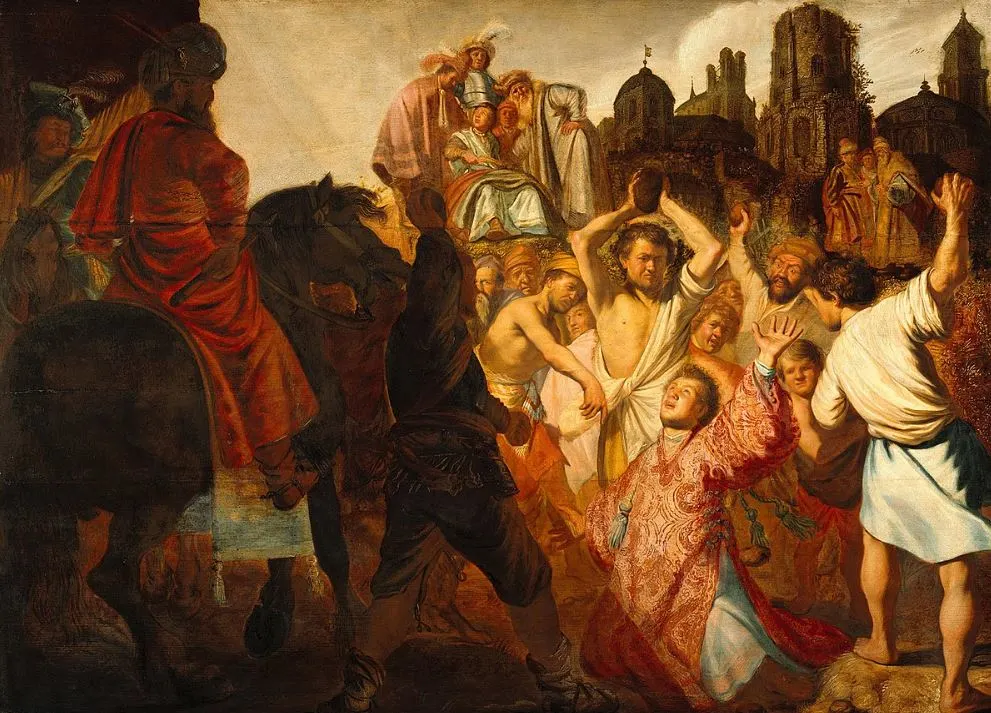
6. The Flight into Egypt – Nicolas Poussin
- Date created: 1657
- Dimensions: 97 x 133 centimeters (38.18 x 52.36 inches)
The Flight into Egypt is a very colorful painting by Nicolas Poussin (1594-1665), the French artist who lived and worked most of his adult life in Rome. The artist of the Baroque era painted in a classical style and often painted landscapes that feature architectural elements, including this one.
It’s believed that Poussin was inspired by a similar painting by Annibale Carracci, another Baroque painter who developed a unique style known as the Bolognese School. It’s a remarkable work in the collection of the Museum of Fine Arts of Lyon because the museum needed help from over a dozen patrons to raise the 17 million euros to buy it in 2007.
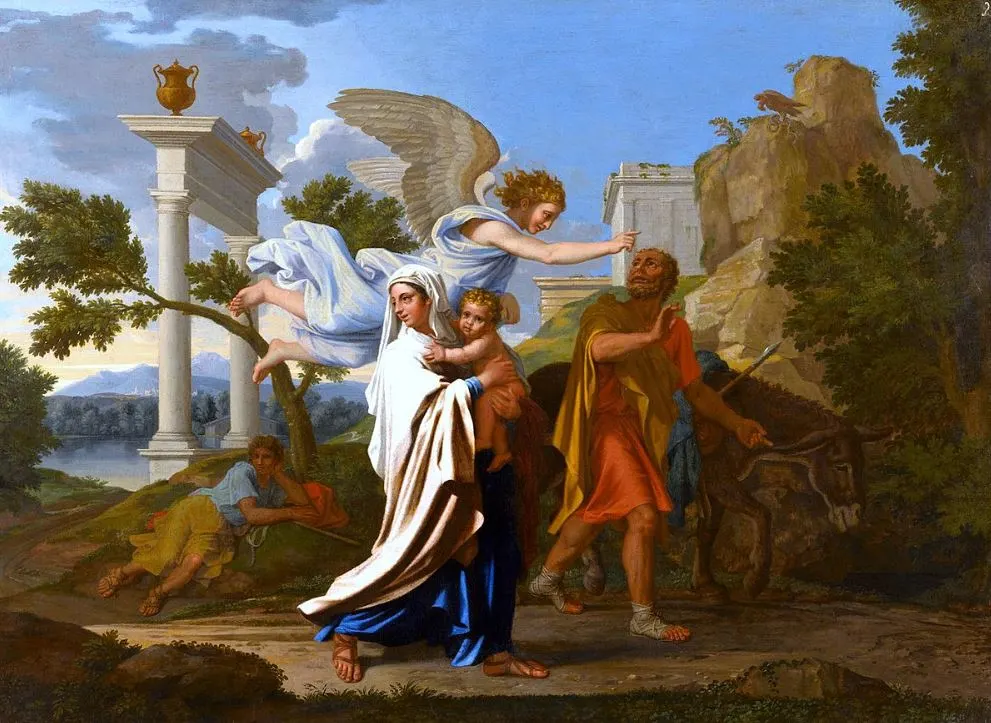
7. Insane Woman – Théodore Géricault
- Date created: 1819-1822
- Dimensions: 72 x 58 centimeters (28.3 x 22.8 inches)
Insane Woman is the title of a rather scary painting by Théodore Géricault (1791-1824), an artist of the Romantic era who was bound to become the leading artist of his time if his career hadn’t been cut short due to illness. He is, however, considered to be a pioneer of the Romantic movement.
This painting is one of several works he completed on the mentally ill. The Romantic era was a period in which an interest in the mental state of human beings increased. Géricault carefully studied people to make paintings that are highly accurate and realistic.

8. Last Words of Emperor Marcus Aurelius – Eugène Delacroix
- Date created: 1844
- Dimensions: 348 × 260 centimeters (137 × 100 inches)
Last Words of Emperor Marcus Aurelius is a painting by Eugène Delacroix (1798-1863), the French artist who took over Géricault’s role as the leading Romantic artist of his time. As the title suggests, it depicts the final moments of the Roman Emperor Marcus Aurelius (121-180), a man known as the “Philosopher King.”
Delacroix was extremely fascinated by the Stoic wisdom of Marcus Aurelius so this painting can be classified as a tribute to him. The Emperor’s son, Commodus, is depicted wearing red while turning away from his father. He eventually took over and plunged the empire into complete chaos.
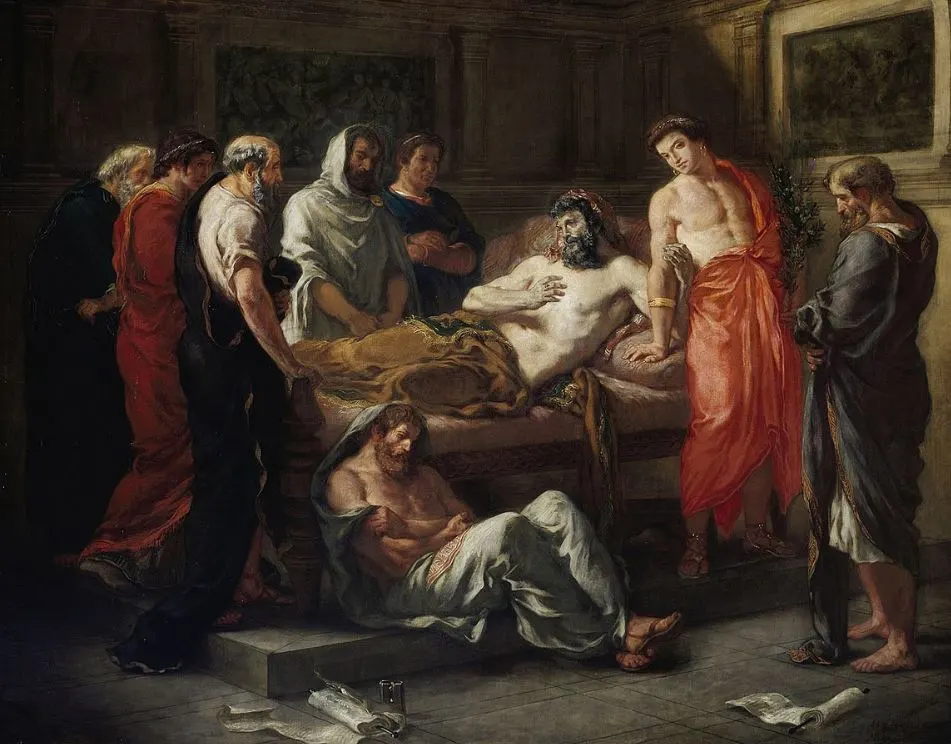
9. Agitated Sea at Etretat – Claude Monet
- Date created: 1883
- Dimensions: 100 x 81 centimeters(39.3 x 31.8 inches)
Agitated Sea at Etretat or “Stormy Sea at Étretat” is a painting by Claude Monet (1840-1926), one of the leading Impressionist artists of the 19th and early 20th centuries. The Impressionists were the first artist to mainly paint outdoors, but this is not exactly how this magnificent work of art was produced.
The painting depicts a cliff at Étretat where Monet spent a lot of his time during the 1860s. He loved the wild sea during the harsh winter months. He returned in 1883 but preferred to stay in his hotel room at the time when he painted this mesmerizing artwork.
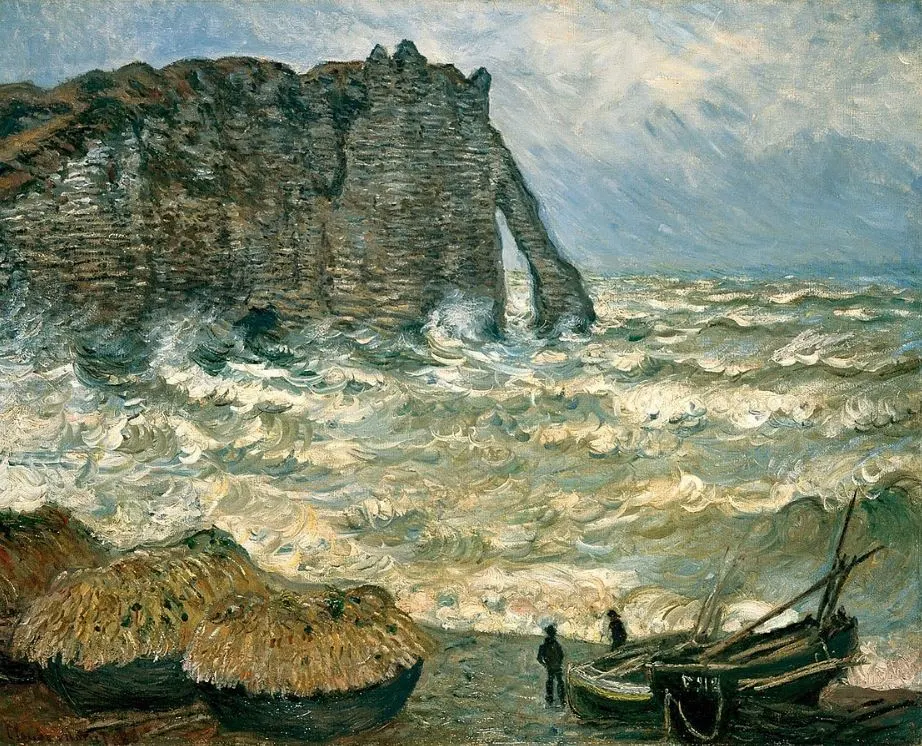
10. The Publisher Eugène Figuiere – Albert Gleizes
- Date created: 1913
- Dimensions: 143.5 × 101.5 centimeters (56.5 × 40 inches)
The Publisher Eugène Figuiere is a painting by Albert Gleizes (1881-1953) that is also known as “Portrait de l’éditeur Eugène Figuière.” It’s one of the many Cubist paintings that the French artist completed during the years before the outbreak of World War I.
Gleizes was a Cubist painter and art theoretician who co-wrote the Cubist manifest titled “Du Cubisme” in 1912 together with Jean Metzinger. This was a highly experimental phase in which a completely new approach to art was developed. The painting depicts a French journalist and author named Eugène Figuière (1882-1944).

